-
Car Reviews
- All reviews
- Midsize SUVs
- Small cars
- Utes
- Small SUVs
- Large SUVs
- Large cars
- Sports SUVs
- Sports cars
- Vans
Latest reviews
- Car News
-
Car Comparisons
Latest comparisons
- Chasing Deals
Volkswagen’s third-generation Tiguan targets a more mainstream audience over the dare-to-be different crowd
In case the question happens to pop up at pub trivia this weekend, the Volkswagen Tiguan’s name is a portmanteau of Tiger and Iguana – indicative of a blend of both animal’s character traits, its maker says.
We had a quick steer of the new model in its native Germany ahead of the third-generation’s arrival in Australia in the second quarter of 2025, to see if it’ll keep a seasoned Tiguan-ist happy while appealing to a broader audience. And it turns out that the drive is downright conventional, even if its now-familiar name remains downright weird.
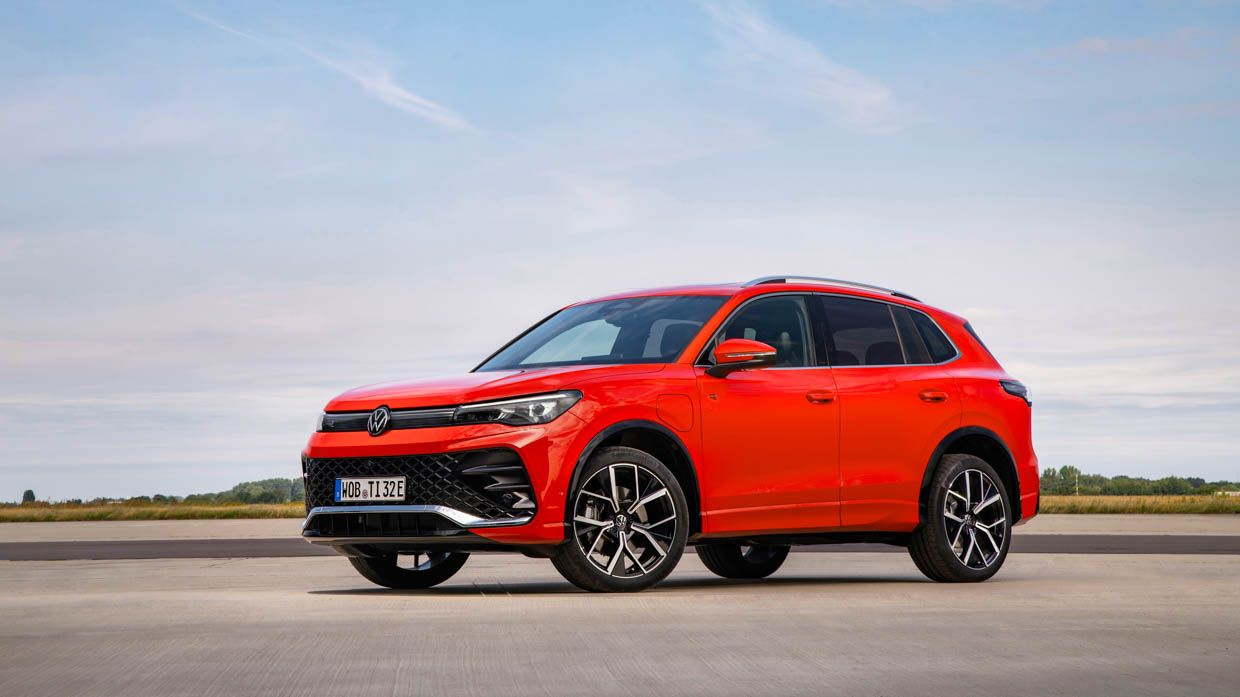
While there’s still plenty of likeable features carried over from the previous generation, the new model’s personality leans more toward a cold-blooded lizard than fiery wild cat.
But that mightn’t be a terrible thing for a greater share of buyers who care more about stoic practicality in a midsize SUV than stripes and sharp teeth.
Let’s start with the subjective topic – and arguably the part which doesn’t matter what we think – of the styling, which has softened off from an angular and handsome look in the previous-gen model to a more rounded and homogenous design for this 2025 car.
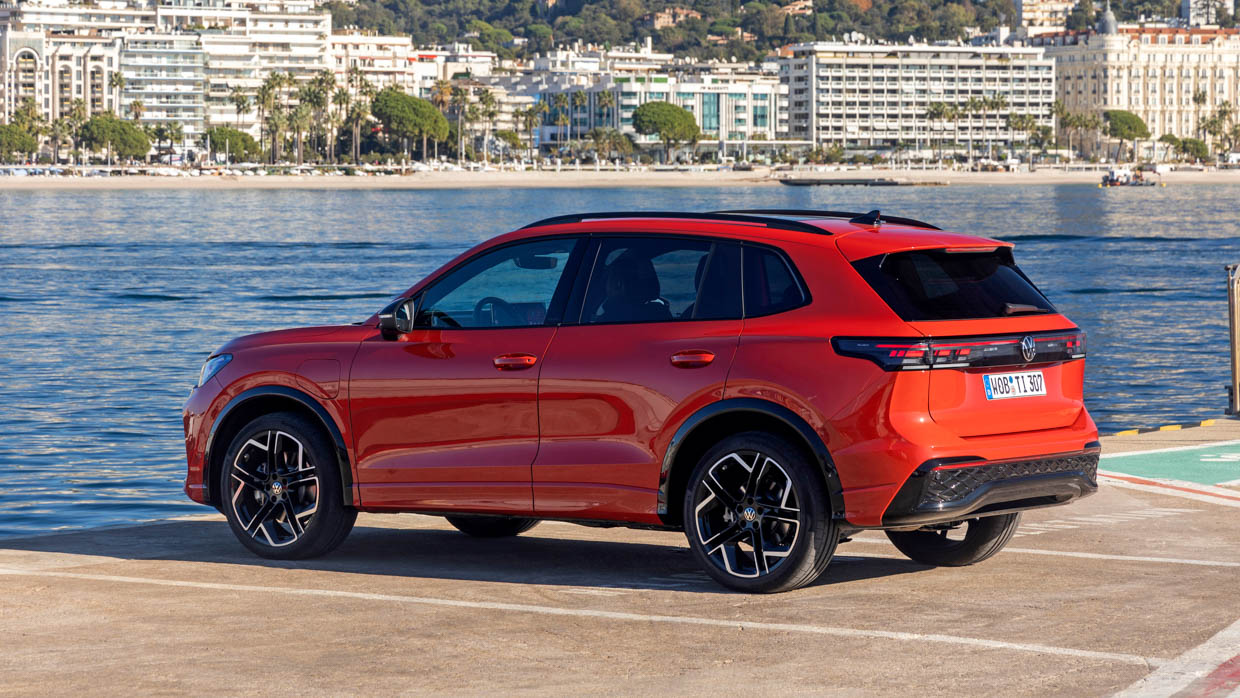
At the front end, large expanses of black overlap with the grille as if Volkswagen was trying to save cash on body-colour paint. Elsewhere, many of the previously impressively sharp panel lines now appear to have been melted back with a blowtorch with this new form.
The new Tiguan is still a good looking vehicle but it feels as though the new version is trying to blend in, rather than stand out with an edgy design. That said, a reduction in aerodynamic drag from 0.33Cd to 0.28Cd has been possible with the new look, which will have benefits for fuel economy.
Fortunately there’s still plenty of quality and sharp design remaining on the inside as well as a good dose of technology for the new version.
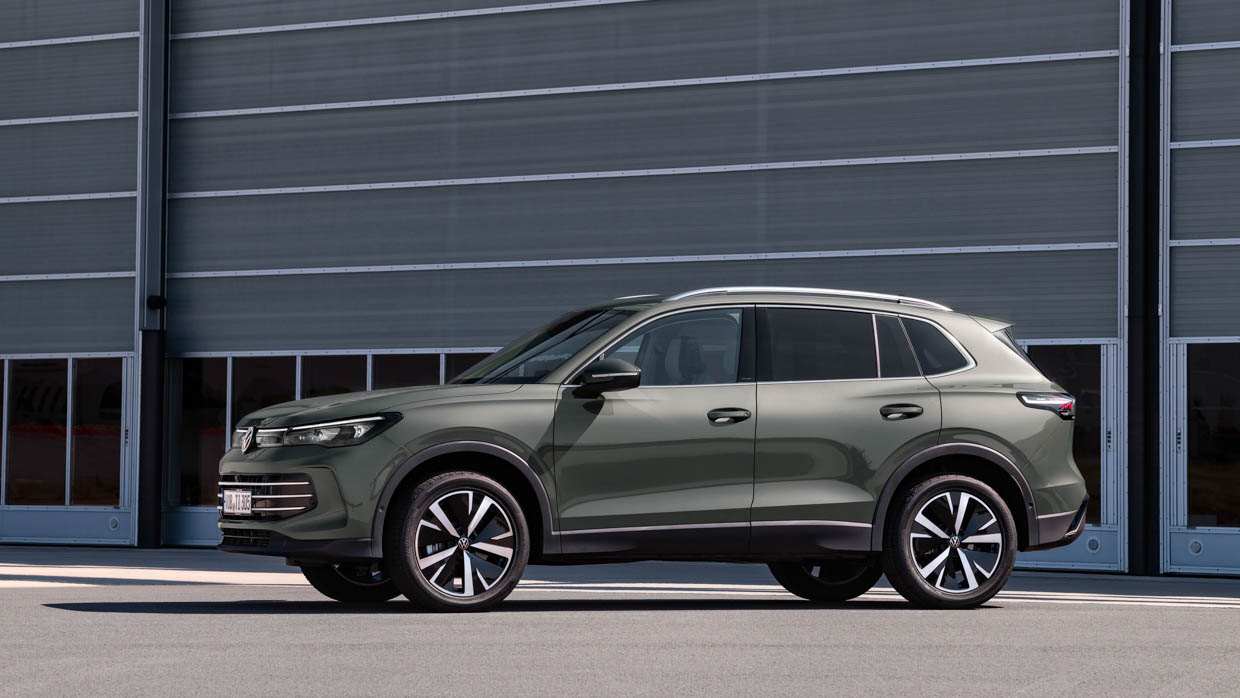
It’s not yet known exactly what the various grades of specification will look like when the new model arrives but a generally elevated level of standard equipment is expected. Standard versions will have a 12.9-inch central touchscreen while a 15-inch screen is offered in higher grades.
There’s also a fully digital instrument cluster, head-up display and smart digital drive-mode dial for a comprehensive digital information offering.
High-definition LED matrix headlights are the first of their kind fitted to a VW MQB-based model, while LED ambient lighting permeates the completely redesigned cabin.
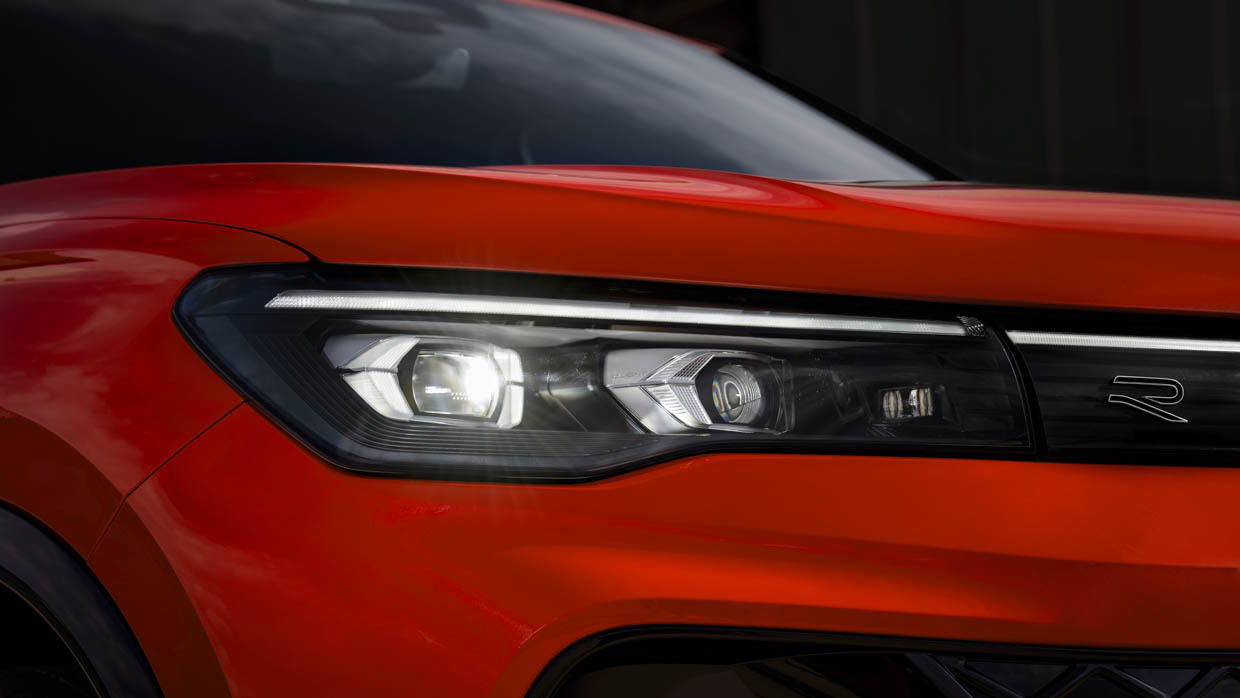
As part of the evolution, adaptive suspension with two-valve dampers are now available and there is a wide range of updated engine options, although Australia will only be getting a fraction of the choices.
It’s likely a high-performance R will come later but don’t hold your breath for either the mild-hybrid eTSI or plug-in eHybrid that’s available in Europe and the UK. Nor will there be a diesel offered.
Our first test was of the 110TSI, which continues on as a 1.4 litre and represents the launch version. It’ll soon to be followed by mid-range 2.0-litres, including the 150TSI which replaces the current 132TSI. A 195TSI trim will form a more potent successor to the 165TSI and is most likely to provide the basis of an R-Line hottie.
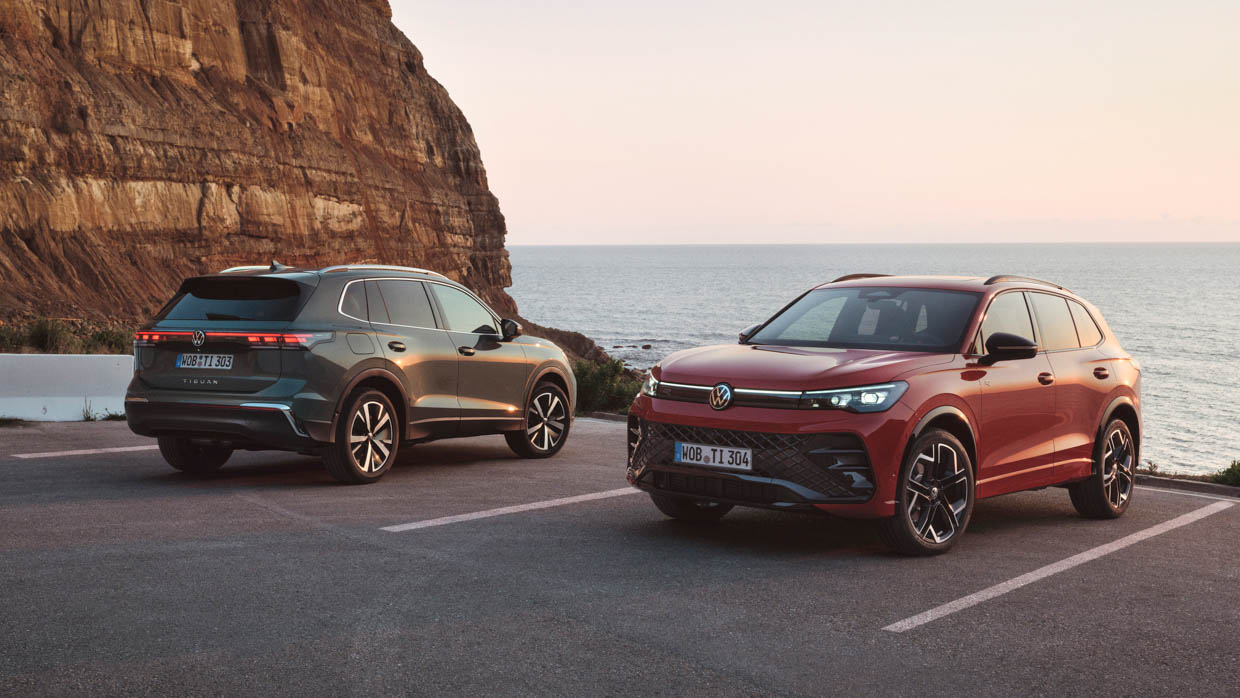
Pricing was not available at the time of writing but if the entry level Tiguan is available with AWD as standard, expect it to carry a small premium over the current most affordable variant, which has front-wheel drive and a $44,000 asking price.
Customers that appreciated the first two generations of Tiguan for the sporty handling and fun dynamics will be glad to hear the new version is even better. It’s genuinely sporty through twisty roads with excellent steering and apparently boundless grip and we love the sporty steering wheel and supportive R-Line seats.
Unlike many rivals, the Sport drive mode steering continues to be light about the centre and only adds weight when a larger degree of angle is dialled in. In practice, this approach feels more mechanically authentic.
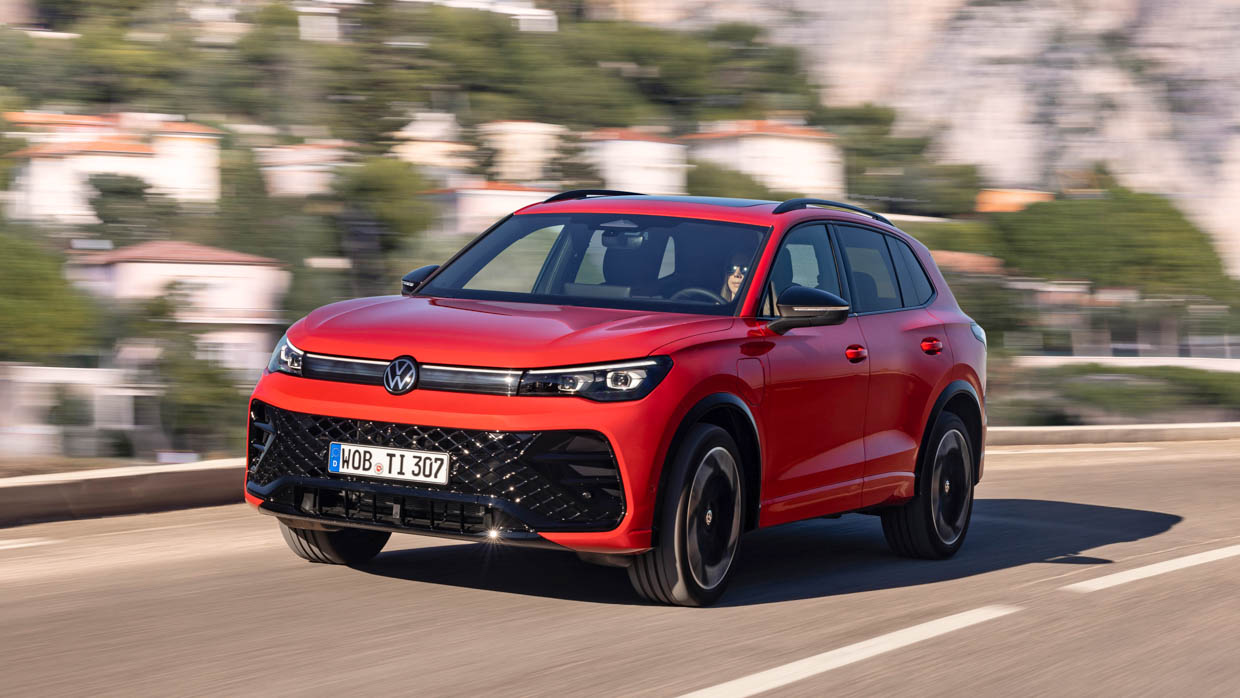
The entry-level 110kW power is nowhere near enough to tear the wide tyres away from the blacktop in either cornering or acceleration and the torque figure of 250Nm is the more operative factor when maintaining pace. It’s a sweet engine that sounds healthy and does a lot with a small capacity if not setting anything fire.
It’s the same story with the dual-clutch automatic which has multiple personalities and makes for a great pairing. During our trip, the fuel gauge barely moved and the smaller engine option appears to offer a very frugal unit which will partly console those hoping for a diesel.
There is a suddenness to the ride however, which Volkswagen has always previously succeeded in eliminating from the excellent MQB Evo chassis in a trade-off between the sharpest dynamics and comfort.
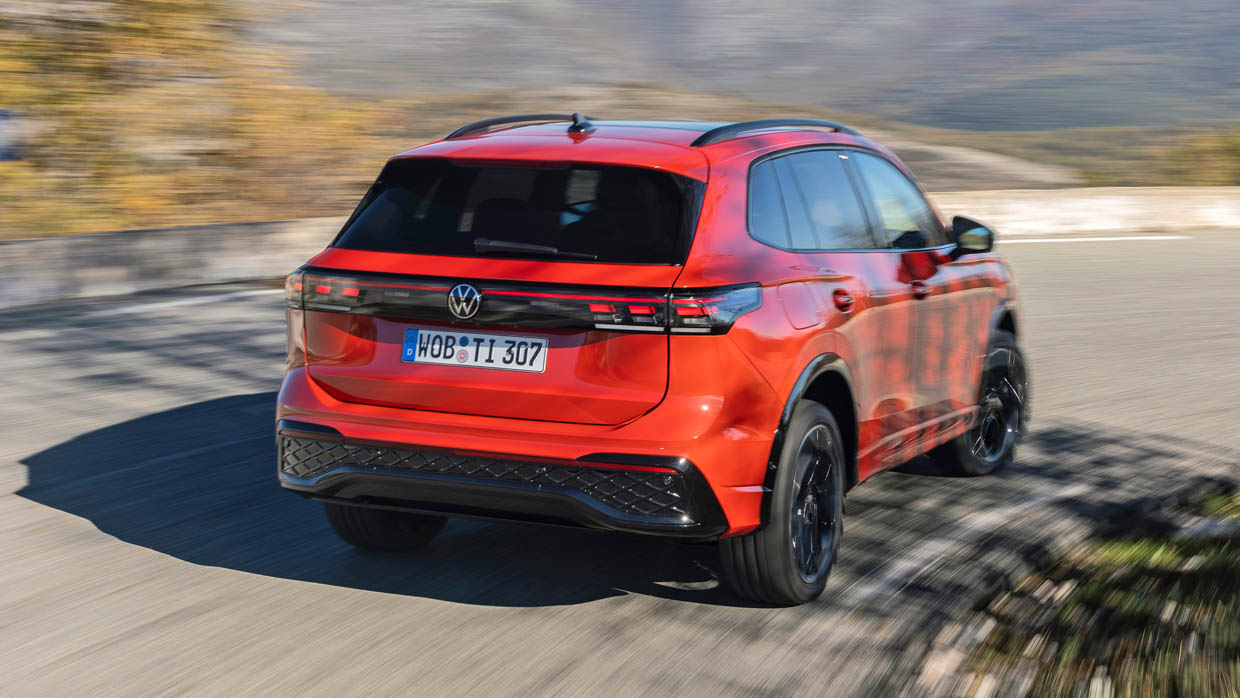
Our car was fitted with the new adaptive dampers, which do allow the suspension to be tuned into a more comfortable setting. However, it does feel as though the chassis team has given a bit too much responsibility to the clever tech rather than good old spring weight selection.
We were rolling on larger 20-inch optional wheels (or perhaps part of the R-Line styling pack) and we’re sure the smaller 17- and 18-inch equivalents would help alleviate the firm ride but at least a prospective buyer will have choice. Our suspicion is that your average Tiguan family might prefer something on the less comfort-compromising side.
The mild-spicy 195kW variant wasn’t available for a sample during our visit, but we have had a steer of the Cupra Terramar which was fitted with the new iteration of the EA888 and seven-speed dual-clutch, offering a good idea of how it’ll feel in the Tiguan. In summary – it’s a bit of a champ.
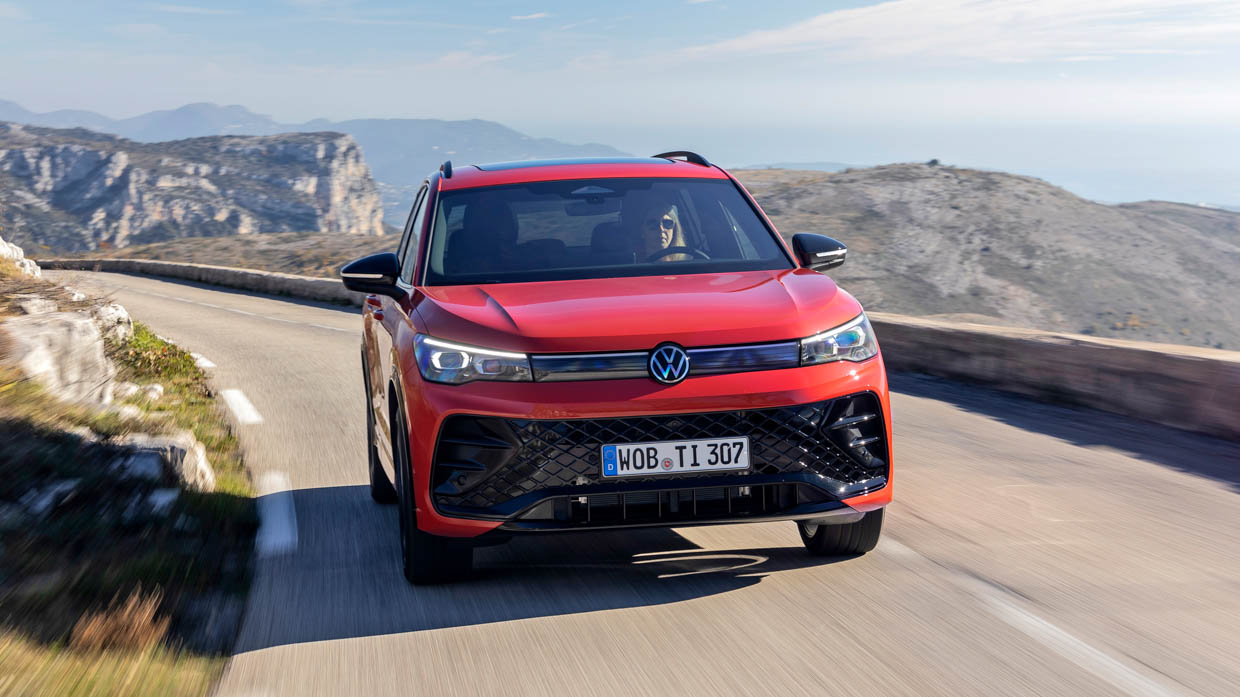
When paired with the powerful petrol engine drivetrains, we’re certain the purposeful suspension tune will make more sense and a better match.
For the new generation, the Tiguan has grown minimally but has still managed to find an extra 37 litres of boot space, increasing the capacity to a respectable 652L. It’s the same story all around the Tiguan’s cabin with clever storage solutions everywhere.
The move to a new steering-column-mounted gear selector will irk some users but is has vacated the central console for more space and features. There are deep storage bins, big cup holders and a clever wireless phone charging pad that can be covered by a hinged shelf for more items to be stowed above when in use.
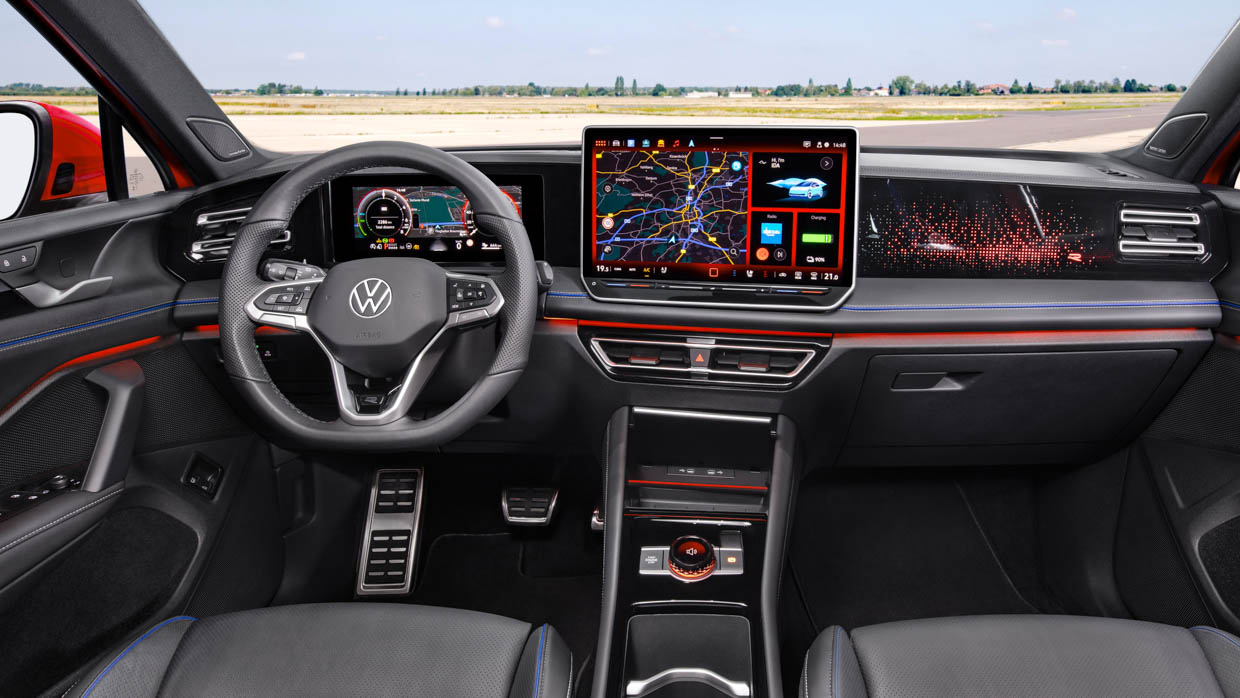
Beneath it, a new drive mode selector dial allows fast scrolling through the various options with a cool OLED screen indicating which mode is being picked without referring to a seperate screen. It works as well as it looks.
For even more space, Volkswagen will offer an even longer version as it did with the Tiguan Allspace, and although it shares much of the Tiguan’s evolution, it’s renamed the Tayron for the new generation.
In its biggest form, the Tiguan’s 15-inch touchscreen is very impressive and will not be upstaged by some of the Chinese brands which are leading the vast screen arms race. It’s full of beautiful graphics and smart functionality.
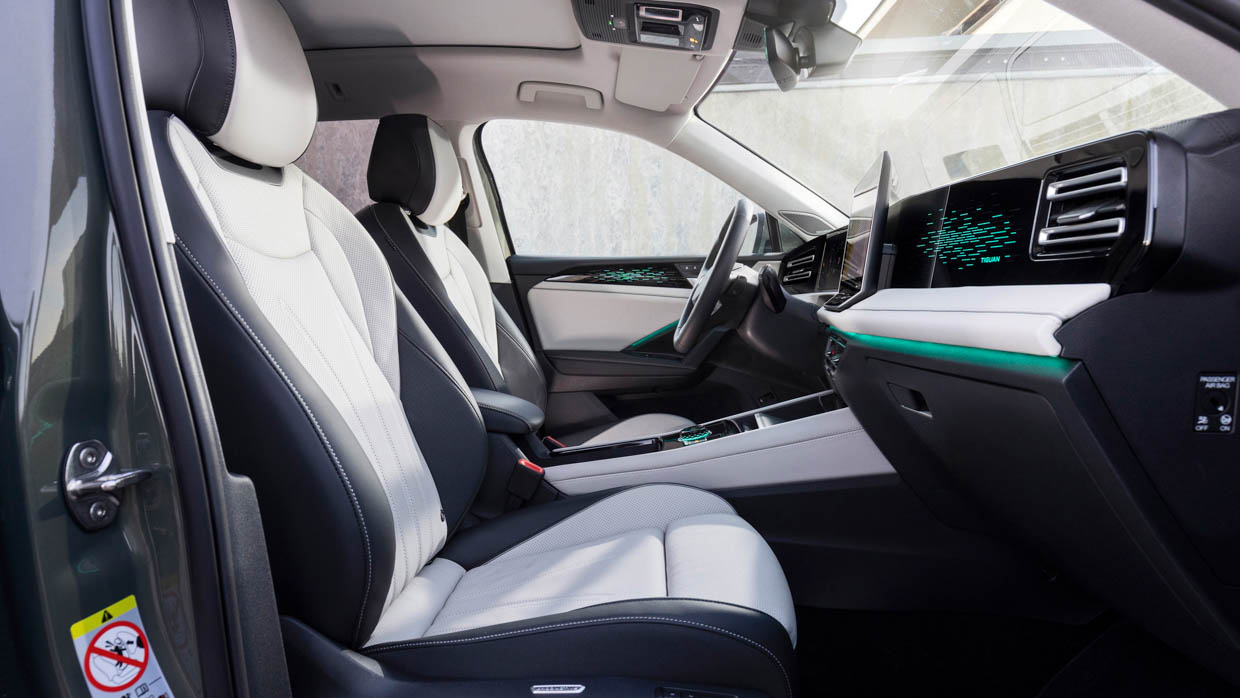
We also love the LED ambient lighting which changes colour along with the digital theme according to the Atmosphere and Mood settings (our pick is the ‘Eternity’ blue and green) although we didn’t have enough time to establish the difference between an atmosphere and mood – one for the first local test drive.
In fact, the general sense of quality and contemporary design runs throughout the Tiguan cabin with good materials, improved ergonomics and design that is premium without being ostentatious – another way VW is keeping challenger brands at bay.
Voice activation is offered courtesy of Ida the virtual assistant and she seems to be proficient enough, while the digital instrument cluster has a good level of customisation plus three additional ‘views’.
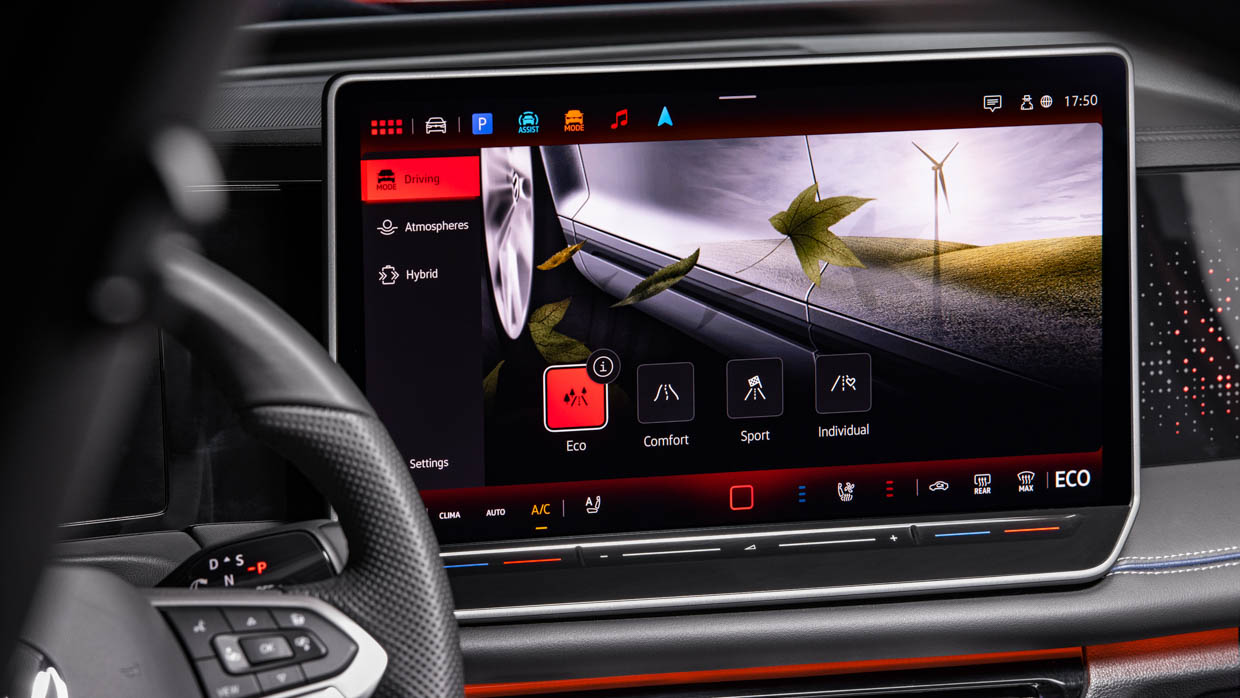
It’s more good news in the second row of seating where much (if not quite all) of the high-quality fit and equipment is continued. Rear occupants get their own digital climate control panel, heated seats and a pair of USB-C plugs, though these will likely be for the higher-spec cars.
Volkswagen’s new Tiguan has already been awarded the maximum five-star rating by the European New Car Assessment Program (ENCAP), which bodes well for local testing and the eye of ANCAP.
The full safety suite will be confirmed for Australian Tiguan variants closer to its arrival time but highlights included as standard for all include AEB with swerve assistance, and an exit warning system which repurposes the ambient lighting to prove a visual warning if something is approaching when a door is popped.
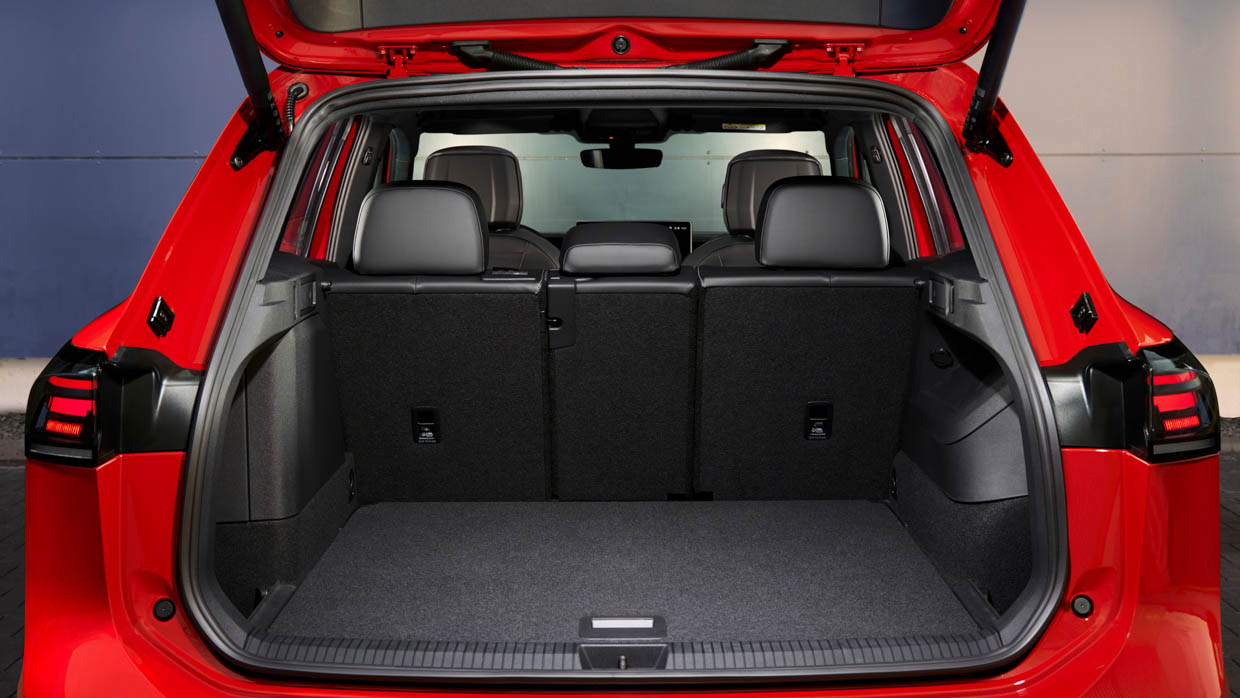
There’s also lane keeping and lane change assistant, dynamic road sign recognition, 360-degree camera view, centre front airbags as well as curtain of both seating rows, and new i-Size standards which reduces the risk of child seats being incorrectly installed.
Anyone who has enjoyed living with a Volkswagen Tiguan for its excellent balance of practicality, right-sized dimensions and fun handling will love the third-generation model. Its steering and general dynamic capability has never been better with levels of body-control and driver involvement that border on those of a hot-hatch.
It now offers even more interior space than ever with some clever practical touches throughout, while packaging together some top-shelf digital technology, better ergonomics and a high-quality interior with classy design and materials.
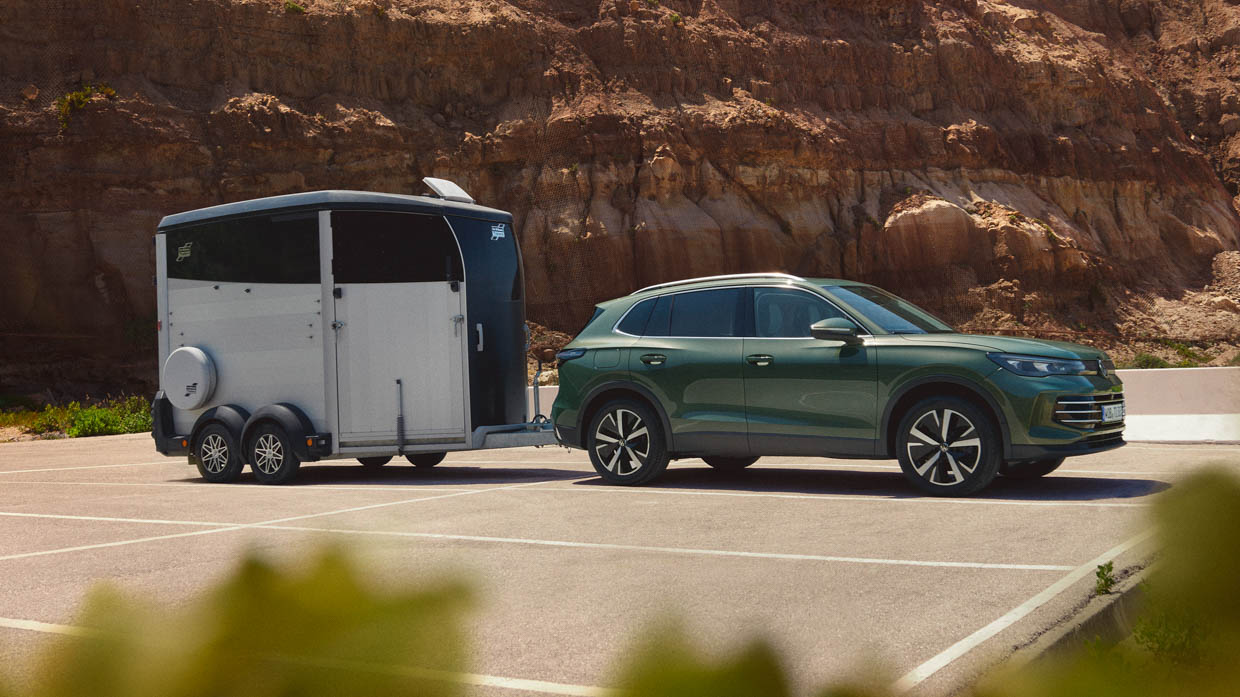
However, the sharp handling has come at a cost to outright comfort and the smallest engine we tested doesn’t offer the level of performance to match.
All of this however, bodes better for the versions that will follow the initial 110TSI pioneer with more power and torque and a balance of sportiness that makes a lot more sense.
About Chasing cars
Chasing Cars reviews are 100% independent.
Because we are powered by Budget Direct Insurance, we don’t receive advertising or sales revenue from car manufacturers.
We’re truly independent – giving you Australia’s best car reviews.
The estimate provided does not take into account your personal circumstances but is intended to give a general indication of the cost of insurance, in order to obtain a complete quote, please visit www.budgetdirect.com.au. Estimate includes 15%^ online discount.
^Conditions Apply
Budget Direct Insurance arranged by Auto & General Services Pty Ltd ACN 003 617 909(AGS) AFSL 241 411, for and on behalf of the insurer, Auto & General Insurance Company Limited(ABN 42 111 586 353, AFSL 285 571).Because we don’t know your financial needs, we can’t advise you if this insurance will suit you. You should consider your needs and the Product Disclosure Statement before making a decision to buy insurance. Terms and conditions apply.
Indicative quote based on assumptions including postcode , 40 year old male with no offences, licence suspensions or claims in the last 5 years, a NCD Rating 1 and no younger drivers listed. White car, driven up to 10,000kms a year, unfinanced, with no modifications, factory options and/or non-standard accessories, private use only and garaged at night.
^Online Discounts Terms & Conditions
1. Discounts apply to the premium paid for a new Budget Direct Gold Comprehensive Car Insurance, Third Party Property Only or Third Party Property, Fire & Theft Insurance policy initiated online on or after 29 March 2017. Discounts do not apply to optional Roadside Assistance.
2. Discounts do not apply to any renewal offer of insurance.
3. Discounts only apply to the insurance portion of the premium. Discounts are applied before government charges, taxes, levies and fees, including instalment processing fees (as applicable). The full extent of discounts may therefore be impacted.
4. We reserve the right to change the offer without notice.